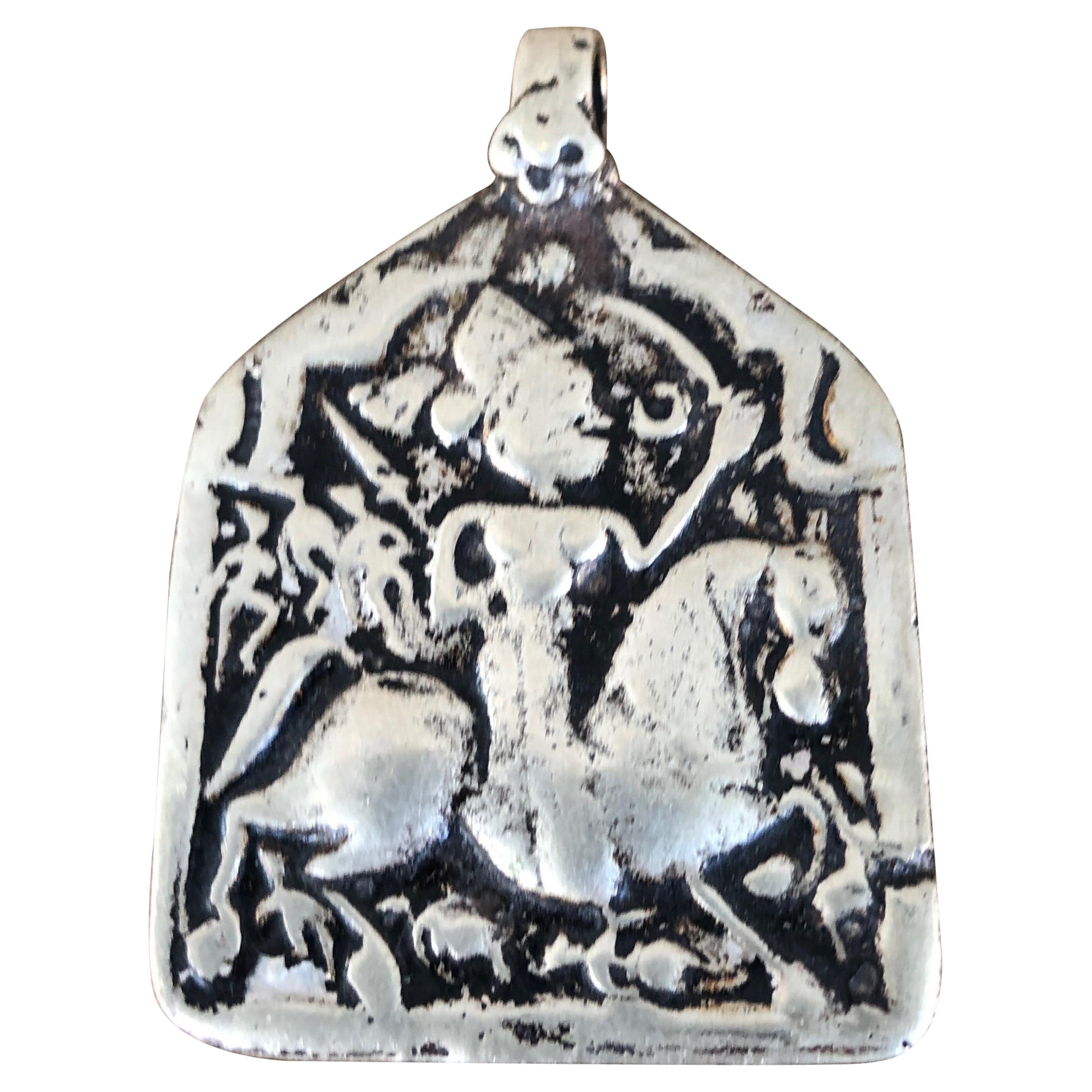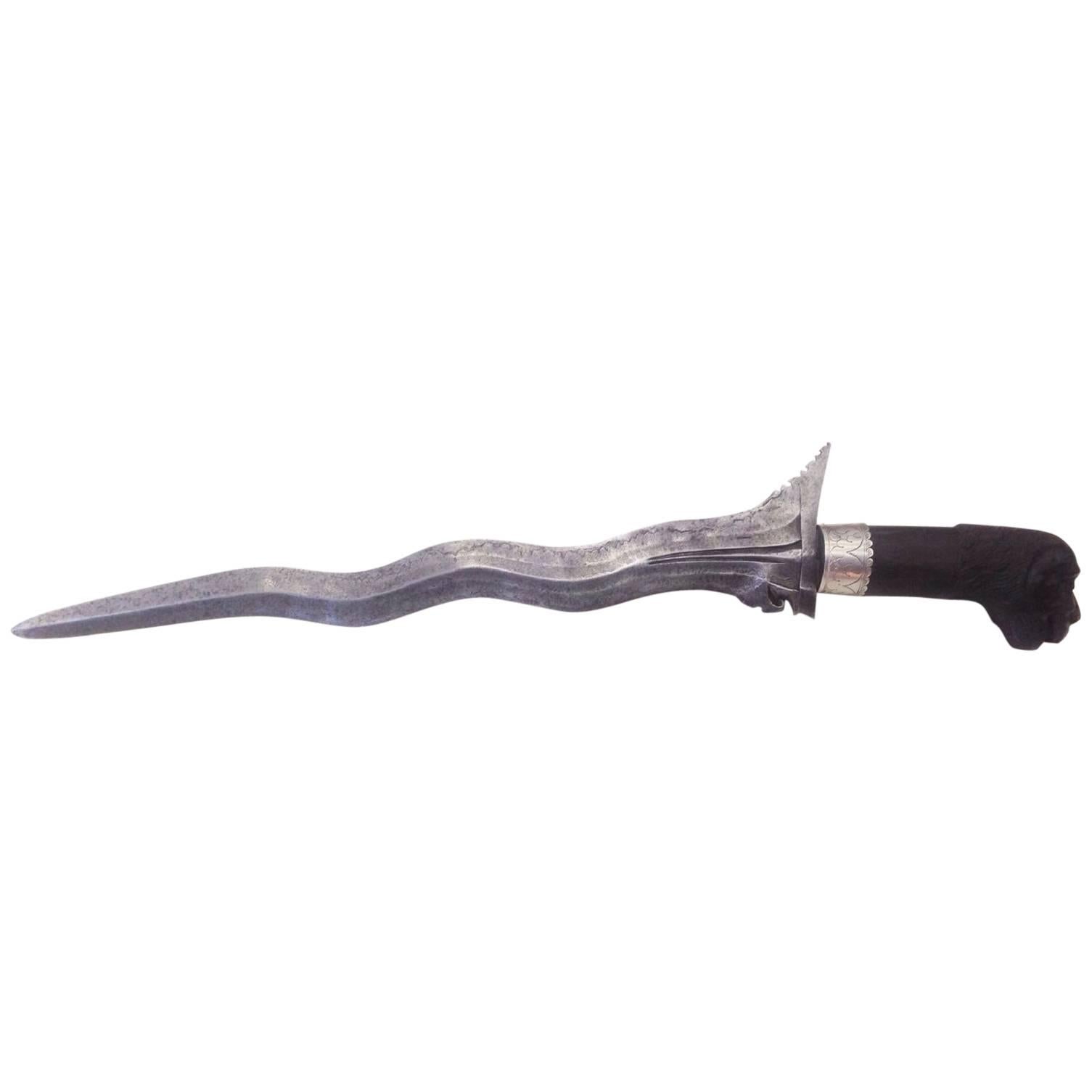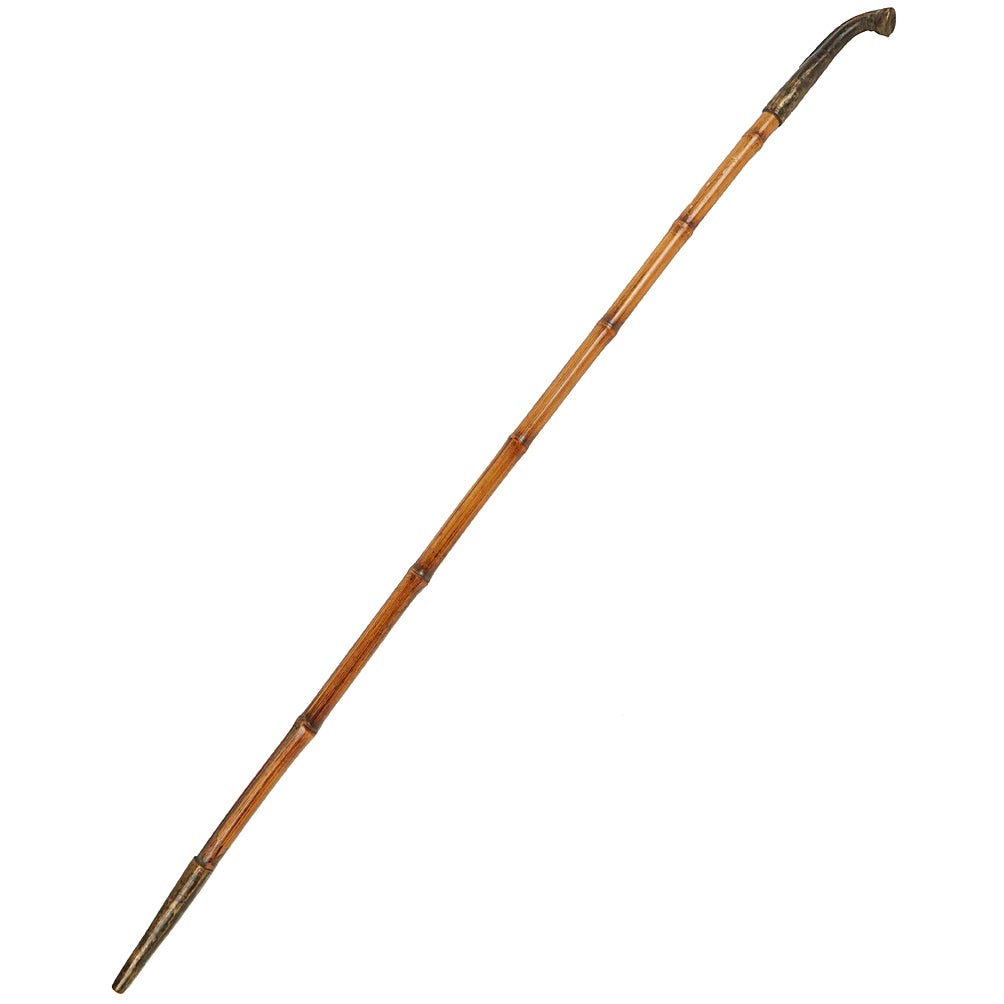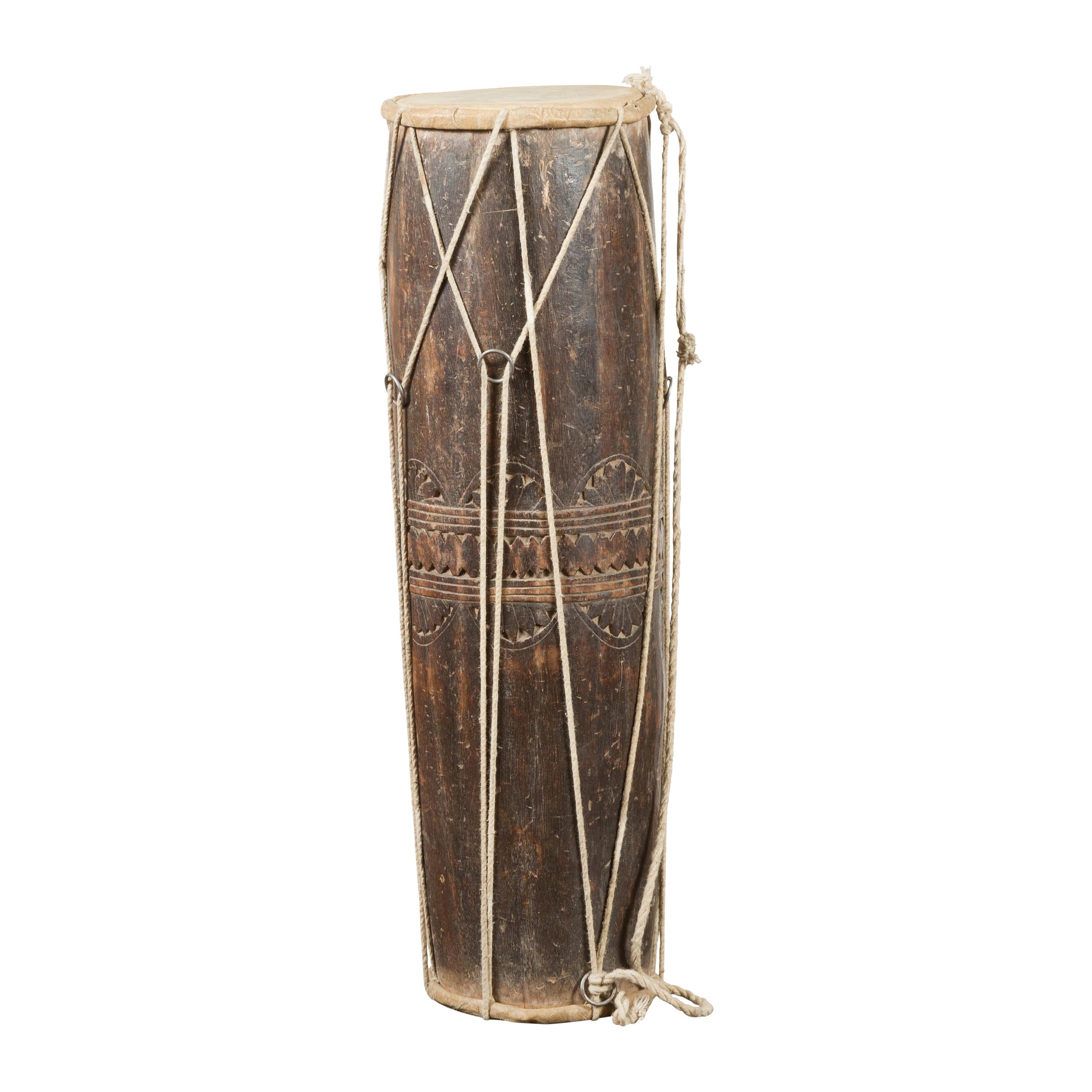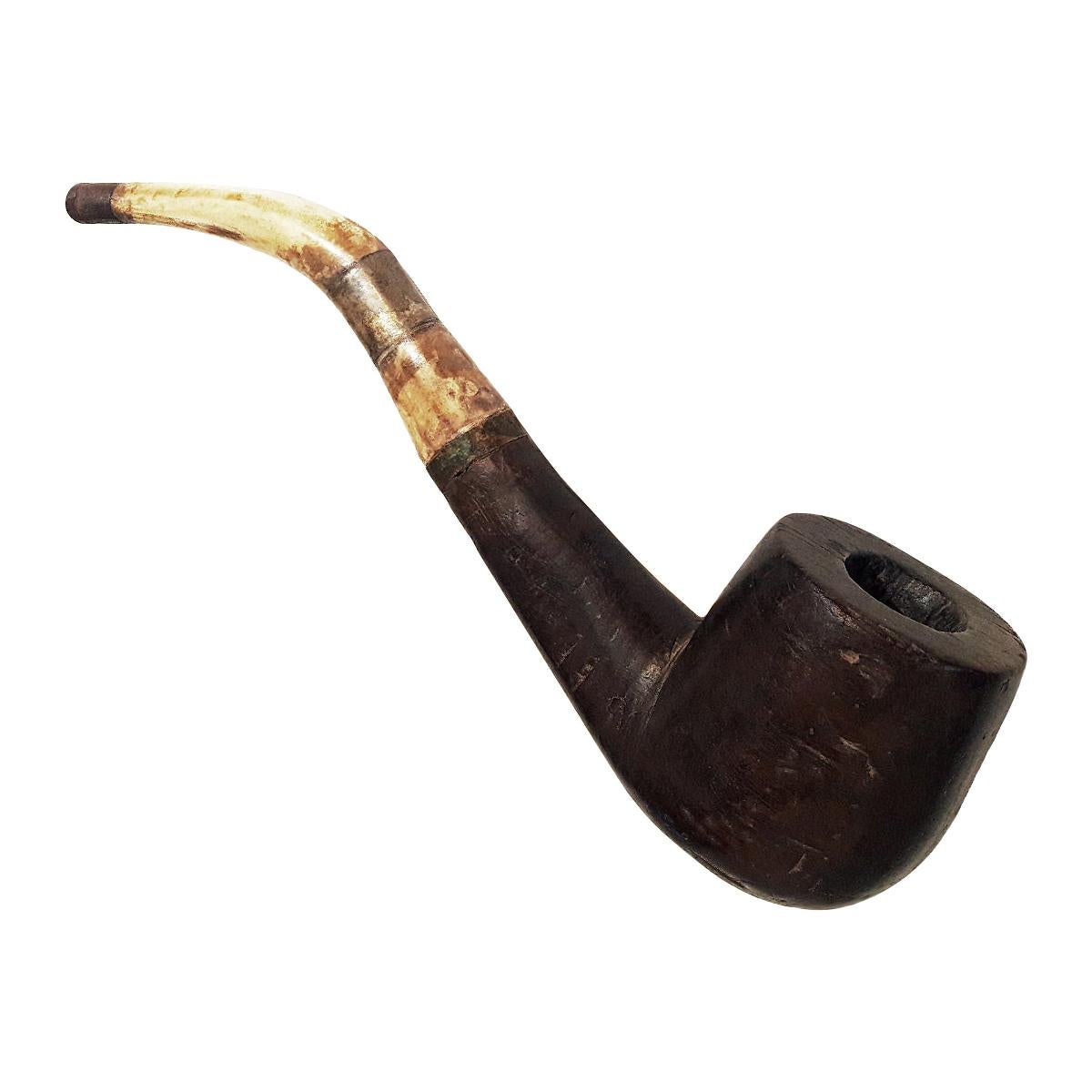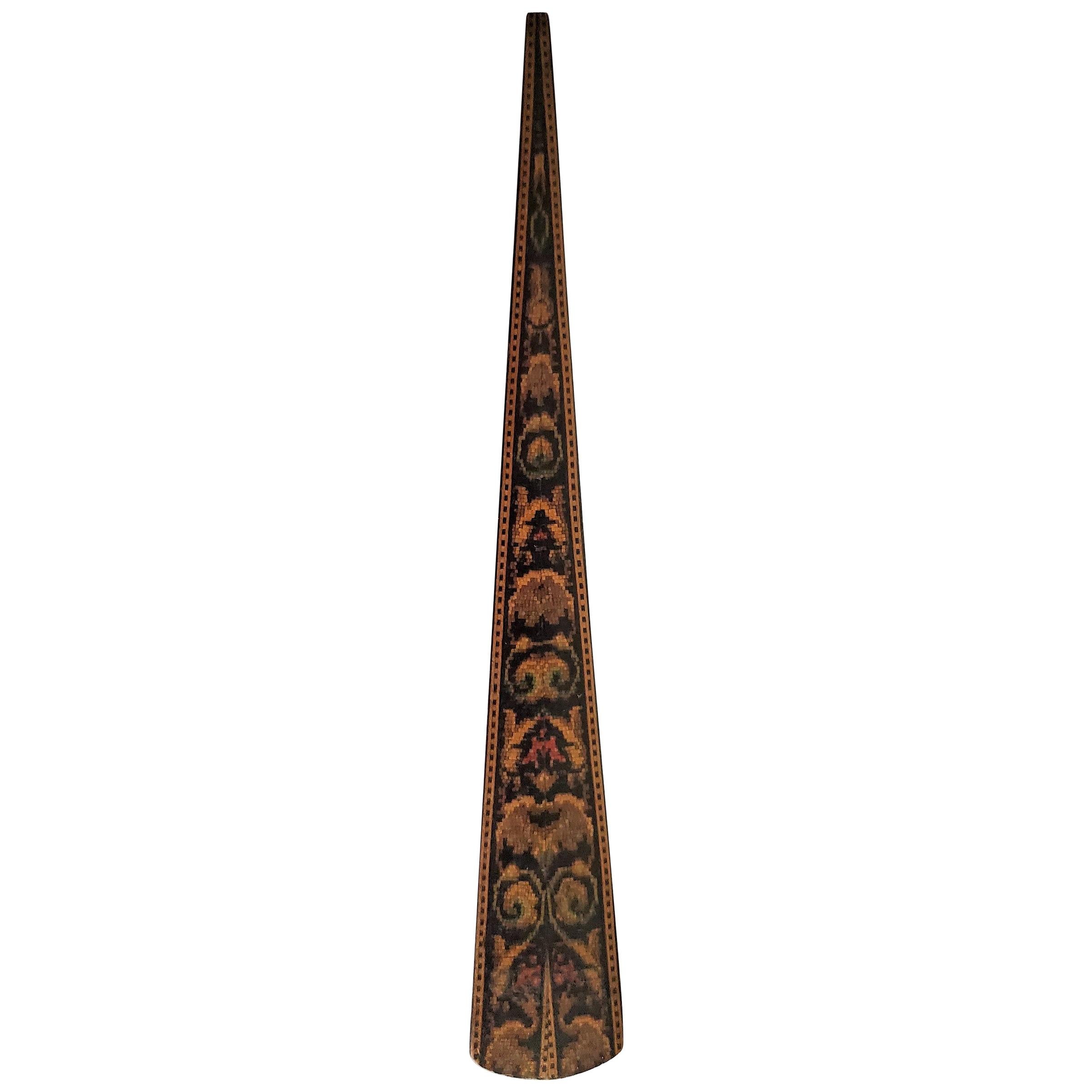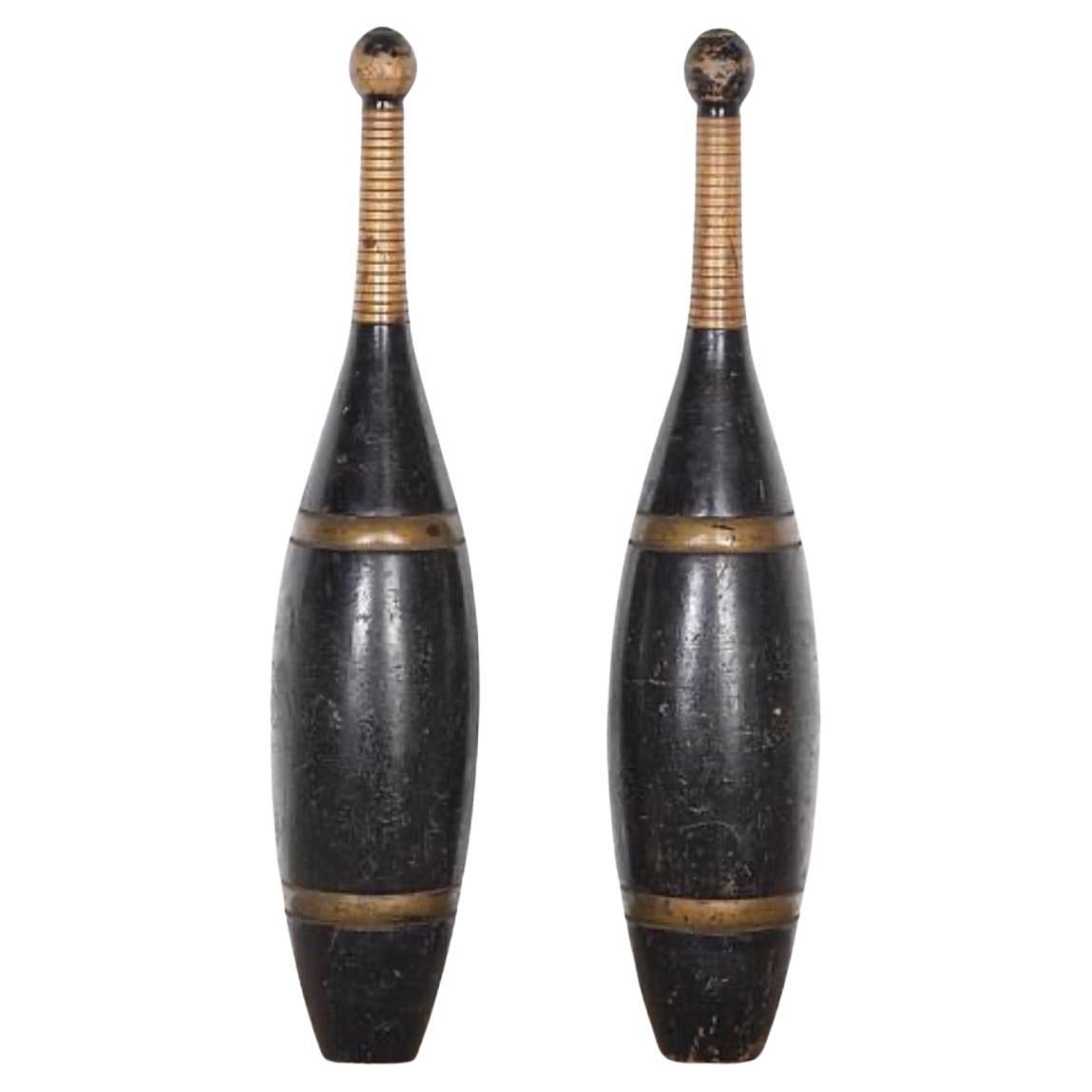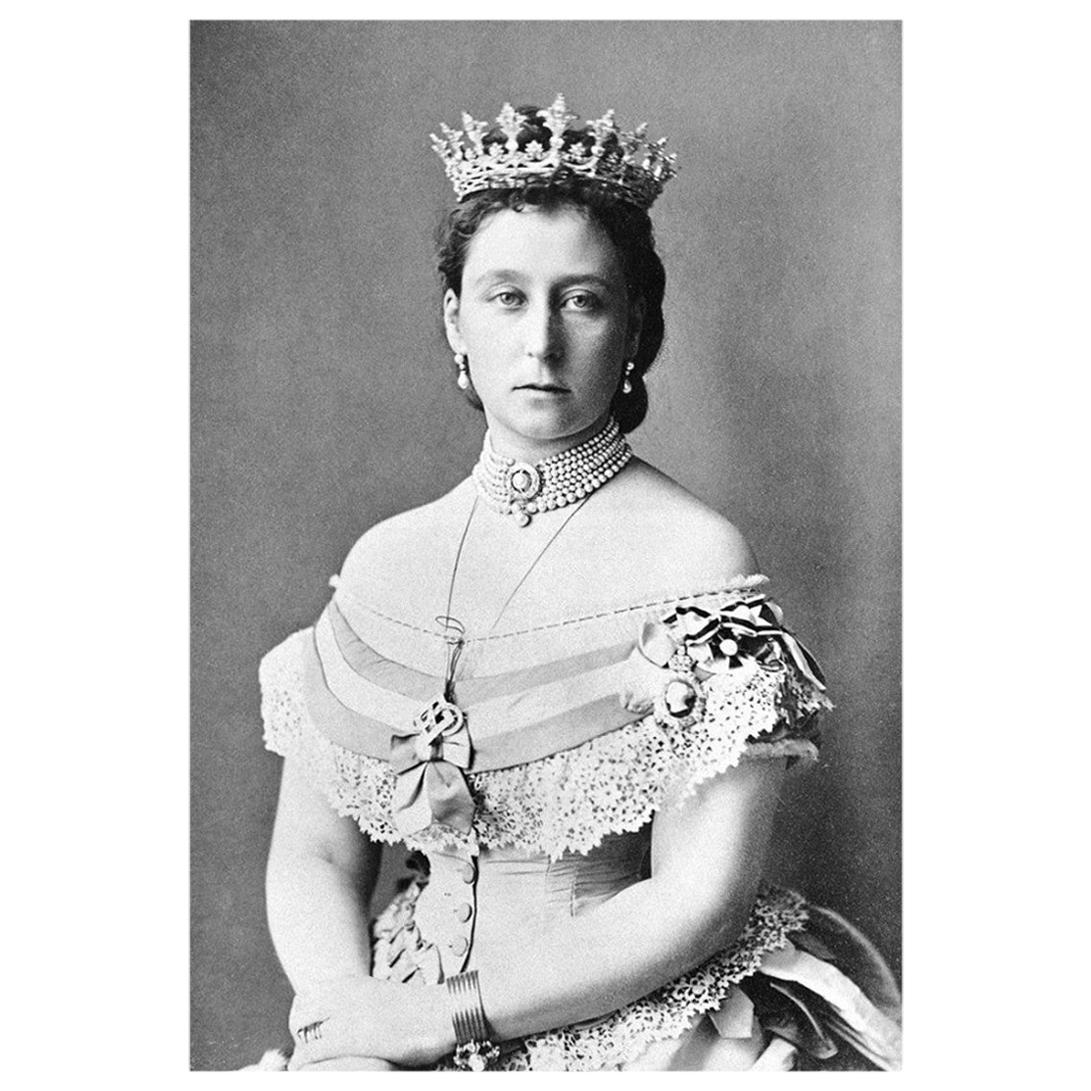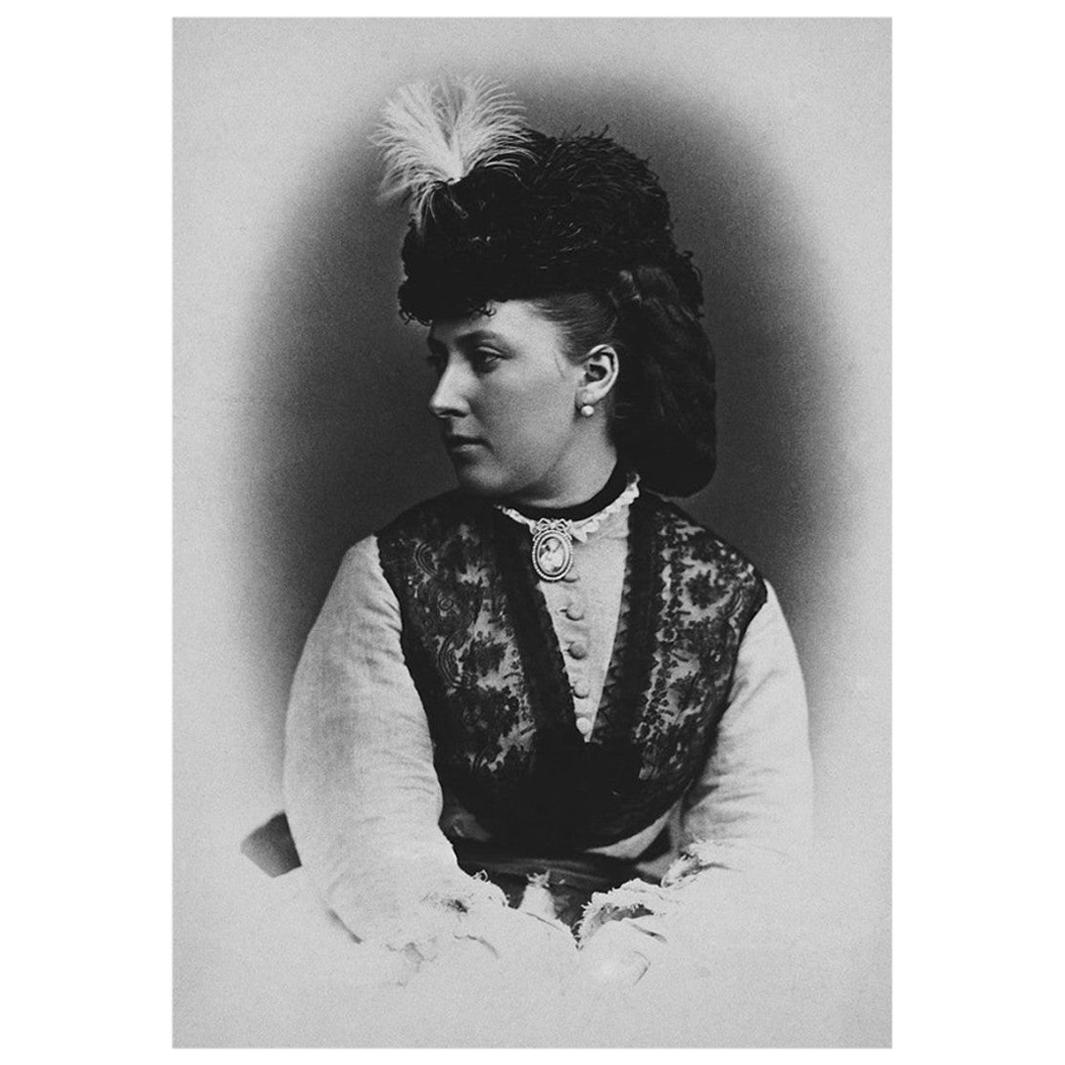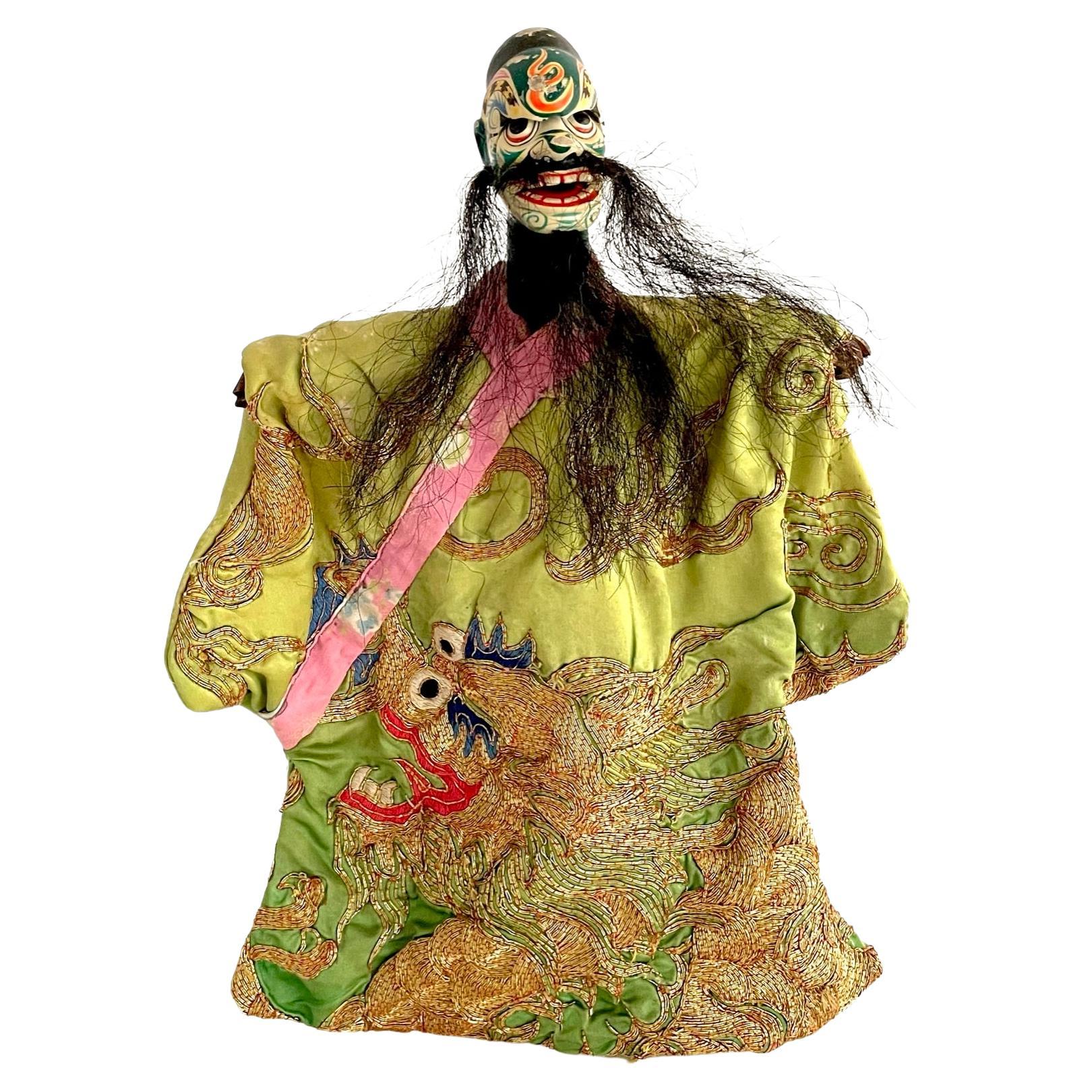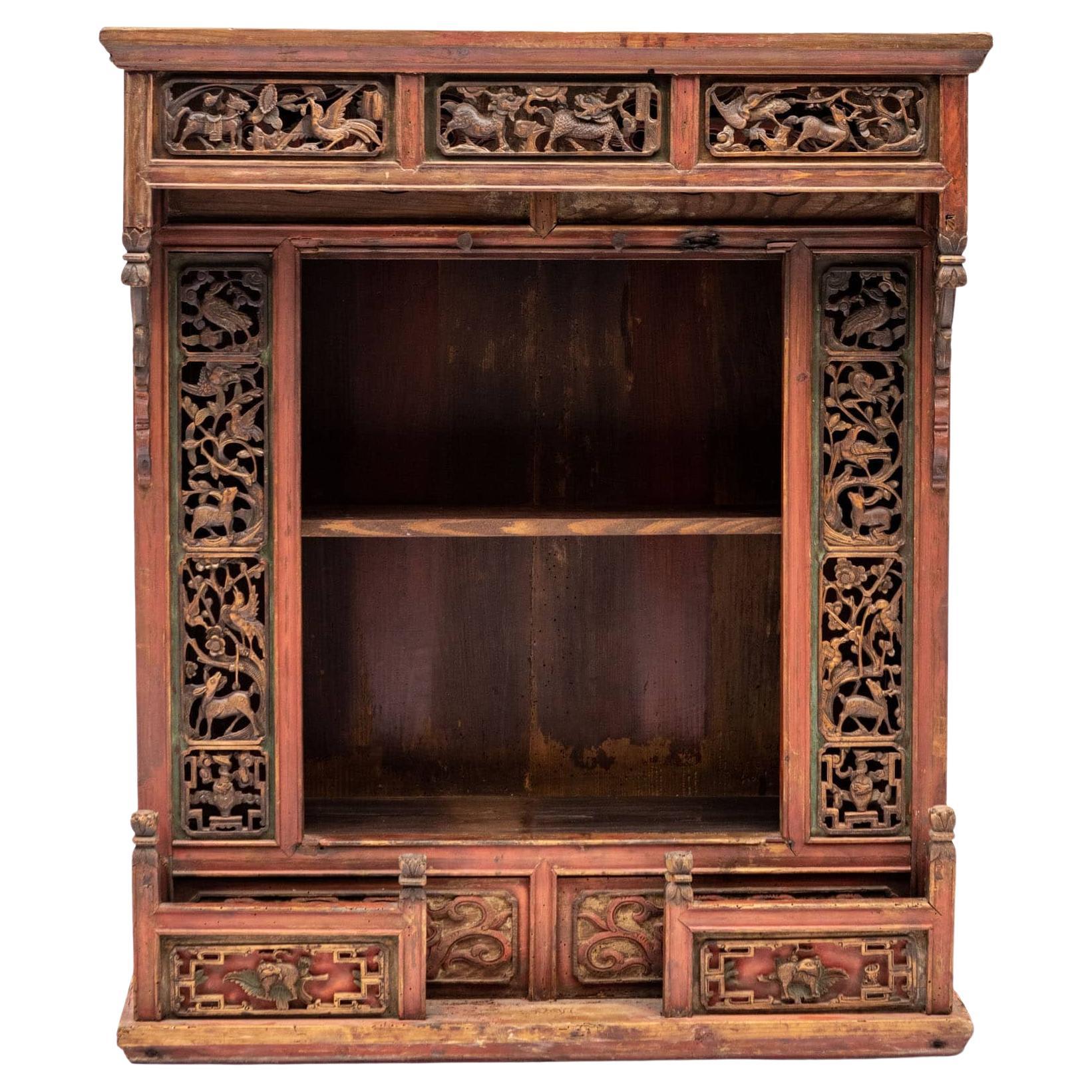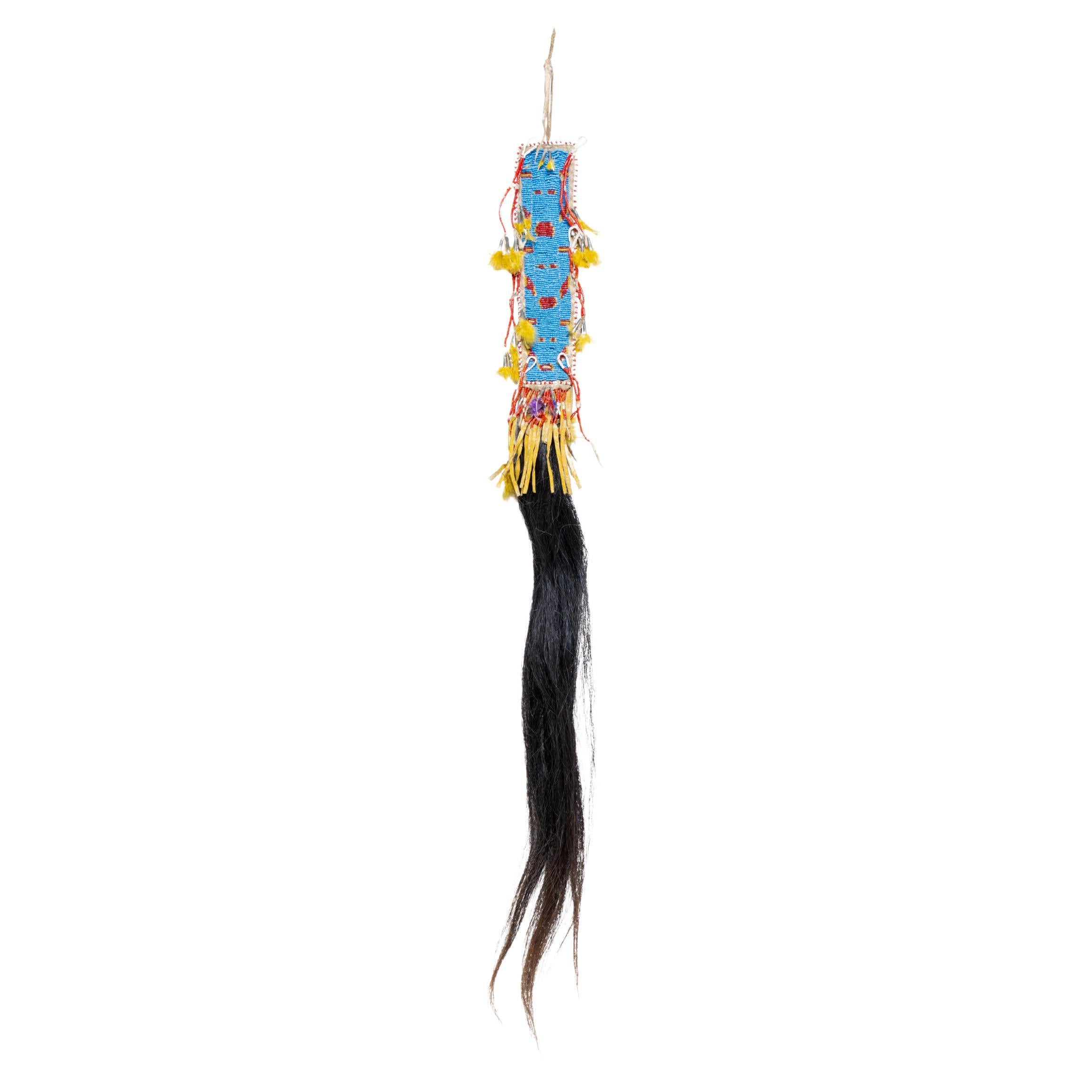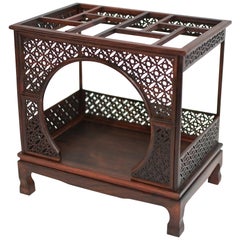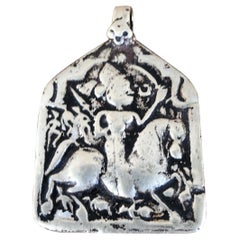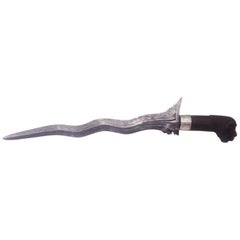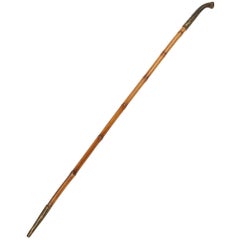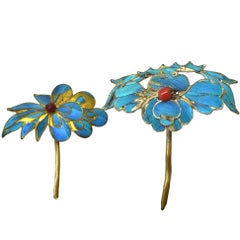
Kingfisher Feather Hair Pins, 19th Century, Set of Two
View Similar Items
Want more images or videos?
Request additional images or videos from the seller
1 of 11
Kingfisher Feather Hair Pins, 19th Century, Set of Two
About the Item
- Dimensions:Height: 2 in (5.08 cm)Width: 2 in (5.08 cm)Depth: 0.5 in (1.27 cm)
- Materials and Techniques:
- Place of Origin:
- Period:
- Date of Manufacture:19th Century
- Condition:Wear consistent with age and use. Minor losses.
- Seller Location:Somis, CA
- Reference Number:Seller: 47001stDibs: LU295738403383
About the Seller
5.0
Platinum Seller
These expertly vetted sellers are 1stDibs' most experienced sellers and are rated highest by our customers.
Established in 1999
1stDibs seller since 2017
702 sales on 1stDibs
Typical response time: 1 hour
More From This SellerView All
- 19th Century Painted Wood Fragment Gilt Red LacquerLocated in Somis, CAA beautiful red lacquered, solid wood fragment painted with an opera scene of victory celebration, featuring various figures dressed in official uniforms and crowns. Remnant gold lea...Category
Antique Early 19th Century Chinese Qing Paintings and Screens
MaterialsWood
$330 Sale Price40% Off - Pair of Wenge Wood Mini Stools, Headrests, StandsLocated in Somis, CABeautiful miniature stools are made of the most spectacular wenge wood. This type of wood has very distinctive wood grains. It is highly prized for its...Category
2010s Chinese Models and Miniatures
MaterialsWood
- Mini Chinese Moon Bed, Wenge Wood ModelLocated in Somis, CABeautiful miniature, finely carved model is the exact replica of a Chinese traditional moon bed. The bed is decorated on all sides by carved panels in an intr...Category
2010s Chinese Models and Miniatures
MaterialsWood
- Set of 5 Snuff Bottles Reverse Painted BirdsLocated in Somis, CAOur snuff bottles are 100% hand painted from within and topped with gemstone agate lids. The Chinese art of églomisé uses a very thin bamboo brush with a few strands of hair to apply...Category
2010s Chinese Bottles
MaterialsAgate
$159 Sale Price / set20% Off - Tiger Snuff Bottles Églomisé Reverse Painted Set of 2Located in Somis, CAFor the Year of Tiger, a pair of beautiful snuff bottles topped with gemstone agate lids and 100% hand painted from within. The Chinese art of églomisé u...Category
2010s Chinese Bottles
MaterialsAgate
- Set of Three Eglomise Reverse Painted Snuff Bottles with LotusLocated in Somis, CAOur snuff bottles are topped with gemstone grade agate lids and 100% hand painted from within. The Chinese art of eglomise uses a very thin bamboo brush with a few strands of hair to...Category
2010s Chinese Bottles
MaterialsAgate
$159 Sale Price / set20% Off
You May Also Like
- 19th Century Pendant with Great PatinaLocated in New York, NYA stunning and rare 19th century amulet with detailed central imagery of a man astride a horse. This piece, from India, conveys it's age and history through the gorgeous patina created over several generations. Worn with a simple leather cord or silver chain, this antique amulet...Category
Antique Late 19th Century Indian Collectible Jewelry
MaterialsSilver
- 19th Century Steel and Sterling Silver Malaysian DaggerLocated in Miami, FL19th century sterling silver Malaysian Dagger. Original carved mahogany wood handle. Sterting silver carved crown. Damascene steel. The kris is an asymmetrical dagger with distincti...Category
Antique 15th Century and Earlier Malaysian Malayer Arms, Armor and Weapons
MaterialsMahogany
- Japanese Bamboo and Brass Kiseru Pipe, Late 19th CenturyLocated in New York, NYA Japanese Kiseru pipe, circa 1870. This type of pipe was used to smoke small amounts of tobacco, and was a very popular way to smoke in Japan before the 20th century. For decora...Category
Antique 1870s Japanese Edo Tobacco Accessories
MaterialsBrass
- 19th Century Thai Ceremonial Drum with Ropes and Leather DrumheadLocated in Yonkers, NYAn antique Thai ceremonial wooden drum from the 19th century, with leather drumhead. Sculptural and freestanding, this 19th century drum, created in Thailand, will make for a great decorative accentuation in any home. Topped with a leather drumhead secured with ropes, the drum is adorned with carved motifs on the belly. With its slender silhouette and rustic appearance, this antique Thai drum...Category
Antique 19th Century Thai Musical Instruments
MaterialsLeather, Rope, Wood
- Burmese Wood, Bone and Brass Tobacco Pipe, Late 19th CenturyLocated in New York, NYA large tobacco pipe from old Burma (Myanmar), circa 1850. Solid wood bowl, chamber and shank. The stem is made of bone, attached to the shank by a mortise in solid brass, and a lip ...Category
Antique 1850s Burmese Other Tobacco Accessories
MaterialsBrass
- Rare 19th Century English Tunbridgeware Hair Pin or SlideLocated in Dallas, TXPresenting an absolutely gorgeous and extremely unique and rare 19th century British Tunbridgeware hair pin/bobbin or slide. This slide is unlike any of it’s kind we have seen before…. it is a very rare survivor ! From circa 1860–1880. Made of walnut with gorgeous marquetry inlay on the entirety of the front with classic Tunbridgeware micro-mosaic all over the front. The rear is walnut. The marquetry inlay appears to be various different woods, namely, maple, walnut and satinwood. Would have been worn in a Lady’s hair bun with the micro-mosaic facing forward. This would have belonged to a very elegant lady in the mid to late 19th century. Tunbridge ware is a form of decoratively inlaid woodwork, typically in the form of boxes, that is characteristic of Tonbridge and the spa town of Royal Tunbridge Wells in Kent in the 18th and 19th centuries. The decoration typically consists of a mosaic of many very small pieces of different coloured woods that form a pictorial vignette. Shaped rods and slivers of wood were first carefully glued together, then cut into many thin slices of identical pictorial veneer with a fine saw. Elaborately striped and feathered bandings for framing were pre-formed in a similar fashion. There is a collection of Tunbridge ware in the Tunbridge Wells Museum and Art Gallery in Tunbridge Wells. The famous makers of Tunbridge ware were in the Tunbridge Wells area of Kent; their most notable work was from circa 1830-1900. Early makers of Tunbridge ware, in Tunbridge Wells in the mid-18th century, were the Burrows family, and Fenner and Co. In the 19th century, around 1830, James Burrows invented a technique of creating mosaics from wooden tesserae. Henry Hollamby, apprenticed to the Burrows family, set up on his own in 1842 and became an important manufacturer of Tunbridge ware, employing about 40 people. Edmund Nye (1797–1863) and his father took over the Fenner company when William Fenner retired in 1840, after 30 years in partnership with him. Thomas Barton (1819–1903), previously apprenticed at the Wise factory, joined the Nyes in 1836, and worked as Nye’s designer; he took over the business in 1863 and continued there until his death. In Tonbridge (near to Tunbridge Wells), George Wise (1703–1779) is known to have had a business in 1746. It continued with his son Thomas, and Thomas’s nephew George (1779–1869), who took over in 1806. In its early years the company made articles such as workboxes and tea caddies with prints of popular views; later items had pictures created from mosaics. Their workshop in Tonbridge, Wise’s Tunbridge Ware Manufactory, was next to the Big Bridge over the Medway; the building was demolished in 1886 to widen the approach to the bridge. Tunbridge ware became popular with visitors to the spa town of Tunbridge Wells, who bought them as souvenirs and gifts. Articles included cribbage boards, paperweights, writing slopes, snuffboxes and glove boxes. At the Great Exhibition of 1851, Tunbridge ware by Edmund Nye, Robert Russell and Henry Hollamby was shown; Edmund Nye received a commendation from the judges for his work. He exhibited a table depicting a mosaic of a ship at sea; 110,800 tesserae were used in making the picture. The manufacturers of Tunbridge ware were cottage industries, and they were no more than nine in Tunbridge Wells and one in Tonbridge. The number declined in the 1880s; competent craftsmen were hard to find, and public tastes changed. After the death of Thomas Barton in 1903 the only surviving firm was Boyce, Brown and Kemp, which closed in 1927. Marquetry was an old technique which was continued by Nye and Barton to create images such as birds or butterflies. ‘Green Oak’ as caused by the fungus Chlorociboria aeruginascens. Stickware and half-square mosaic was invented by James Burrows in about 1830: a bunch of wooden sticks of different colours, each having triangular or diamond-shaped cross section, were tightly glued together; in the case of stickware, the resulting block was dried, then turned to form an article such as the base of a pincushion. For half-square mosaic, thin slices were taken from the composite block, and applied to a surface.[1][2][4] Tesselated mosaic, was a development by James Burrows of half-square mosaic; it was adopted by George Wise and Edmund Nye. Minute tesserae were used to form a wide variety of geometric and pictorial designs. Many sorts of wood were used for the various colours; about 40 were in regular use. Only natural colors were used; green was provided by “green oak”, produced by the action of fungus on fallen oak. Designs for articles were often taken from designs of Berlin wool work.Category
Antique Late 19th Century English High Victorian Collectible Jewelry
MaterialsSatinwood, Walnut
Recently Viewed
View AllMore Ways To Browse
Silver Hair Pin
Antique Rare Buttons
Rare Antique Buttons
Coral Hair
Blue Hair Pin
Regal Brooch
Antique Coral Pin
Antique Kingfisher
Silver Feather Brooch
Antique Silver Hair Pins
Antique Single Bangle
Antique Ladies Brooches
Antique Silver Metal Bangles
Antique Hairpin
Antique Hairpins
Antique Chinese Brooch
Natural Coral Bangles
Antique Coral Bangles
